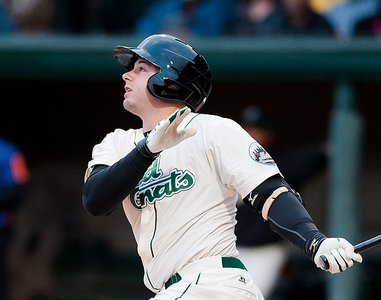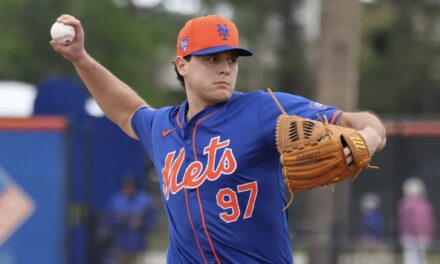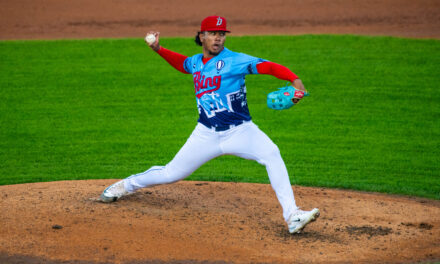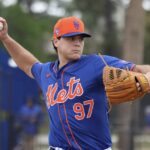Baseball America (B.A.) released their latest issue which not only featured Noah Syndergaard on the cover, but also listed their new top ten prospect rankings for all the teams in the NL East. The Mets had a bunch of names we have all seen on these top prospect lists before–Syndergaard, Travis d’Arnaud , Wilmer Flores, Brandon Nimmo and Gavin Cecchini.
The one choice that took many off guard may have been Kevin Plawecki being listed as the No. 5 prospect in the Mets’ organization. Plawecki has made one of the bigger jumps I have seen a prospect make in a while. Some experts didn’t even have him in the top 20 before the 2013 season; the rest had him somewhere between 15 and 20.
B.A. now ranks Kevin Plawecki higher than Wilmer Flores, who was once considered the best hitter in the Mets’ minor league system.
So where does Plawecki fit? I guess it depends on who you ask.
There is no doubt that Plawecki is a top ten prospect, aside from that, it doesn’t really matter where these guys rank. If you’re in the top 10 it means you should be on your way to Citi Field, if you are top five, it means you should have a starting job someday.
In B.A.’s best tools section, they had Plawecki ranked as their best hitter for average. And while Brandon Nimmo was awarded with best strike-zone discipline, Plawecki definitely exercises the best strike-zone judgment.
Kevin Plawecki struck out a mere 77 times in his professional career while Nimmo struck out 131 times alone in in 2013. While Nimmo had 71 walks (ridiculous), Plawecki had about 30 more hits than Nimmo. Plate discipline is about patience, but it also comes with a higher propensity of striking out, as Nimmo displayed. Plawecki also only struck out 29 times in three seasons at Purdue. That’s serious strike-zone judgment.
Plawecki surprising some people as the No. 5 prospect is more a result of the fact that he received little love for his efforts last year from Baseball America. It was like people would swipe his accomplishments under the rug because he was considered “old” for A-Ball. I don’t think he was named to the B.A. Prospect Hot Sheet at all in 2013, and their excuse during the Q&A session always referred to his age.
The Mets, on the other hand, realize what an outstanding ball player they have on their hand, as Plawecki was named Co-Player of the Year in the Mets organization.
The 2014 season is moving fast upon us. Pitchers & catchers will be reporting before we know it, and most have Plawecki penciled in with Binghamton. Plawecki will probably be a non-roster invitee to Spring Training, and this is the season where Plawecki can afford to skip a level. He’s proven enough with his bat and his advanced strike-zone judgement to warrant the jump to Triple-A. Last season, I lobbied for a promotion to Binghamton after he lit up Savannah–A-Ball simply was not a challenge for him. The hitter’s environment in the PCL would be one that Plawecki could easily adjust to.
The Future Catcher of The New York Mets
If Travis d’Arnaud does turn out to be the catcher of the future for the Mets, there is always the opportunity that the Mets transition Plawecki to first base, or try to move him in a trade. Plawecki is just too good of a hitter to be a backup catcher. For the Mets, having two catchers listed in the top five prospects is not exactly something to be worried about–it’s pretty rare.
Plawecki is currently two years younger than d’Arnaud and their numbers play out similarly in the lower levels of minor league ball–it wasn’t until the jump to Double-A where d’Arnaud started to show the power. In fact, Plawecki hit for higher average, had fewer strikeouts, and just as good of power numbers through A-ball as d’Arnaud had.
I wonder if Travis d’Arnaud is starting to hear footsteps…the footsteps of a Boilermaker.
















